In my role as Land for Wildlife officer, I am privileged to observe nature’s interactions with equally intrigued landholders. My mind is often whizzing with thoughts and questions that can’t be immediately answered, my pen furiously taking notes for later. Recently I was quizzed about the common name of an orchid, Cymbidium madidum, a little question, but one which led me down an intriguing path of discovery, and one I wanted to share in this article.
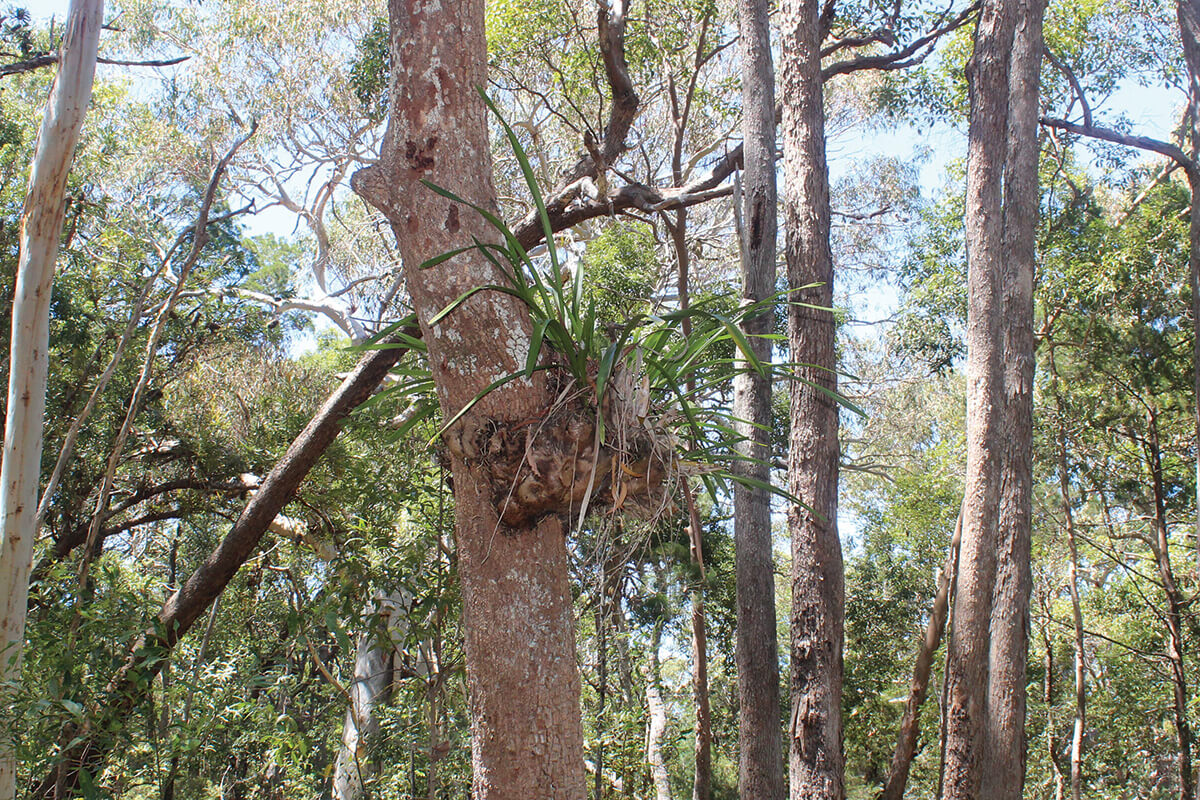
Cymbidium madidum is a relatively common orchid in SEQ and it’s likely that most of us have walked under many more than we realise. They are one of the biggest, boldest epiphytic orchids in Australia and once seen, they are hard to ignore. Now that I’ve mentioned it, I expect you’ll see them everywhere! Whilst there are about 50 species of Cymbidium in the world, Australia has only three endemics, including Cymbidium madidum. Whilst this species is considered an epiphyte (a non-parasitic plant that grows on another plant), it can also be found growing elsewhere. The two other Australian species (C. canaliculatum and C. suave) tend to establish in tree hollows, using extensive roots and rhizomes to penetrate deep into decaying heartwood – a key differentiating growth feature to assist identification.
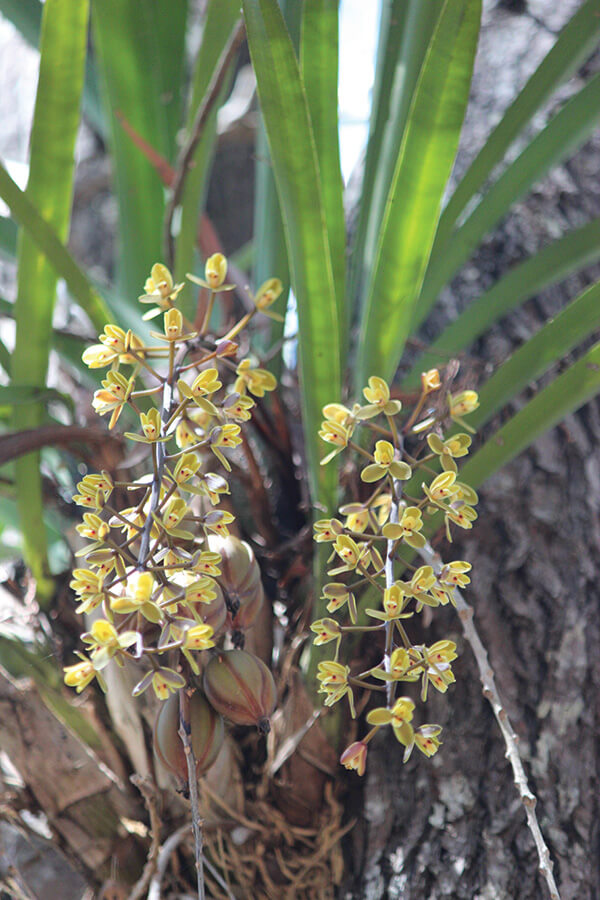
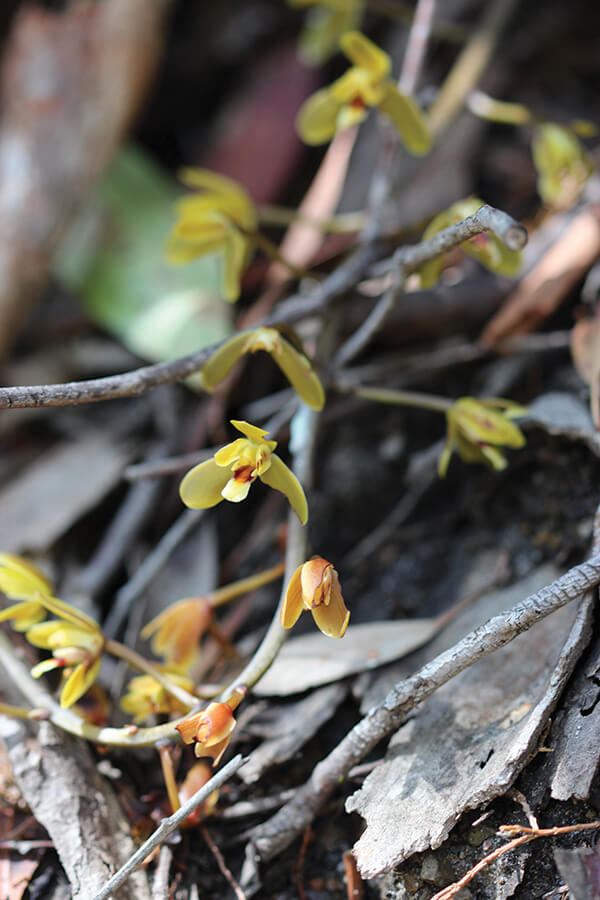
Moister environments such as rainforests, swamp forests, she-oak groves and open forests conceal Cymbidium madidum. Cast your eyes up paperbarks, she-oaks and eucalypts as well as across landscape features like sandy soil, rocks, boulders and cliff faces and you’ll soon find one. August to February they put on a pendulous show of small, colourful flowers but have your binoculars handy to enjoy the detail in these little wonders.
Our native bees, genus Tetragonula, play an important role in the pollination of this orchid. Like many other orchids, this species’ flowers are highly fragrant, but lack edible pollen and nectar – leaving the bees rather disappointed as they search in and out of each flower, leaving a trail of pollinated flowers behind them. However, the female worker bees have been observed scratching and chewing the labellum (a modified petal) before entering the flower, which raises a question as to whether there might be a symbiotic relationship here after all.
As temperatures rise from morning to afternoon, the orchid’s scent intensifies. This in turn, increases the visitation by native bees, leading to further pollination. However, even though visitation increases, these clever female worker bees are not completely fooled as they don’t recruit their nestmates to join them like they would for rewarding flowers.
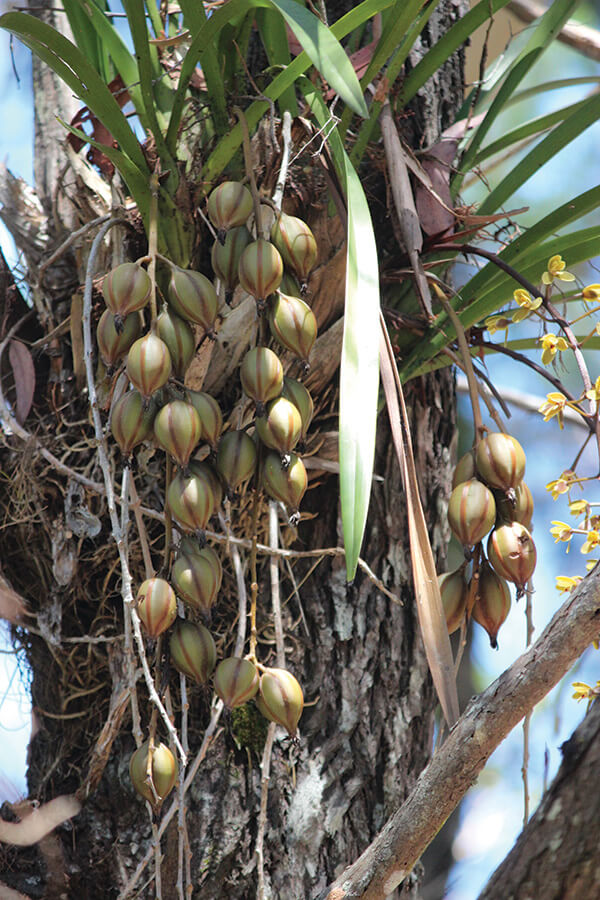
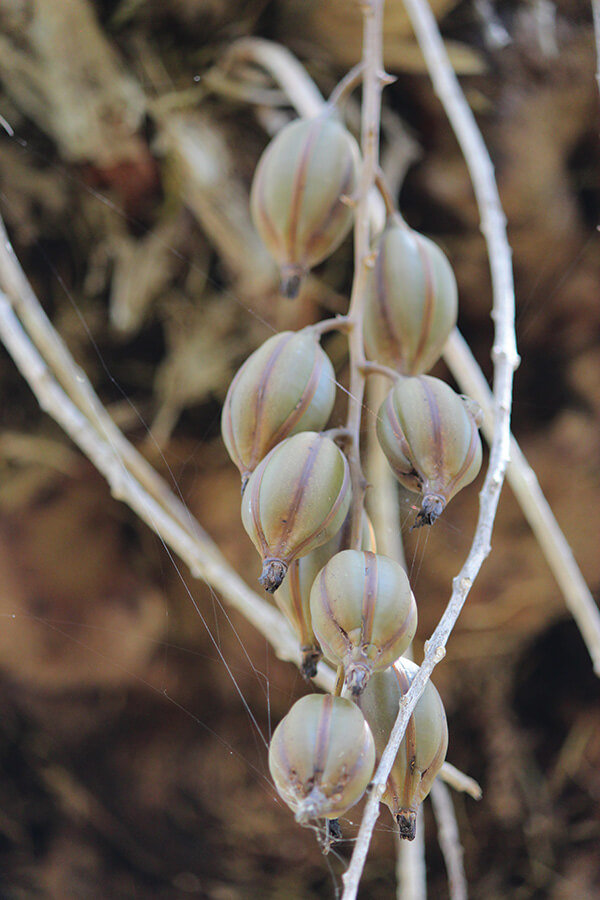
One common name of this orchid is Native Cymbidium, but like all common names, there can be duplication with other species. It’s not the most descriptive common name, however, the journey of discovery that stemmed from one little question was indeed worthwhile.
Article and photos by Kylie Gordon
Land for Wildlife Officer
Sunshine Coast Council
References and Further Reading
Bartareau T (1995) The pollination of Cymbidium madidum and C. suave by native bees – a case of floral reward deception. The Orchadian 11(10), 487-495.
Houston TF (2018) A Guide to Native Bees of Australia. CSIRO Publishing.
Jones DL (2021) A Complete Guide to Native Orchids of Australia. 3rd ed. Reed New Holland.

Can you grow native cymbidiums on trees,or any native orchid